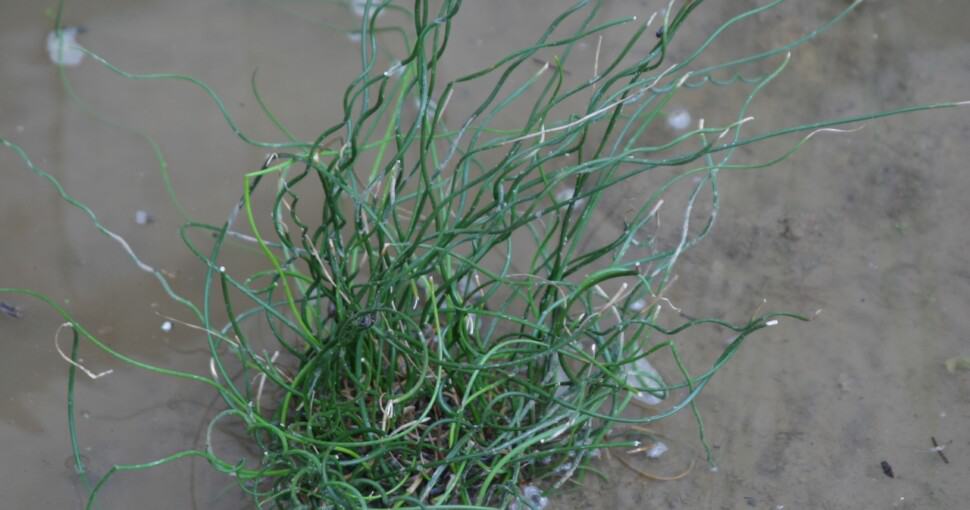It is said that there is nothing new under the sun. This statement is true of hairstyles and how many styles resemble plants in nature. Hair and hairstyles are as varied as plants, and growing plants to look like hair can be fascinating.
Contents
With a wide variety of head planters available, there are many options to grow plants that look like hair indoors or in the garden. Plants make fantastic gifts, and growing plants that look like hair as a gift can be fun. Growing hair-shaped plants can also be a lighthearted way to teach children about plants while having fun with these young budding gardeners.
Whether you wish to grow long hair, short hair, brightly colored hair, curly hair, or messy hair, there is a plant option to suit your needs. Let us delve into a few hair-lookalike plants to choose from.
More plants looking like body parts: 9 Plants That Look Like Vagina | 5 Plants That Look Like Hands | 10 Plants That Look Like Brains | 10 Plants That Look Like Boobs
1. Climbing Onion
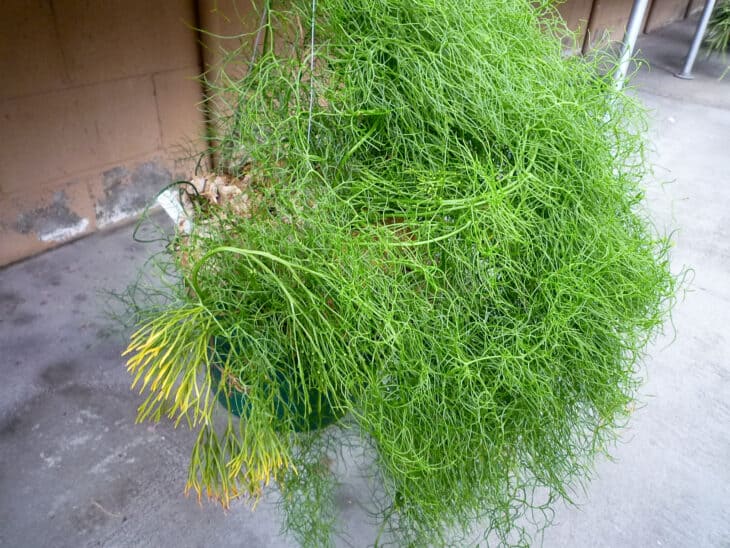
The climbing onion (Bowiea volubilis) also goes by the name of sea onion plant. A climbing onion plant is a succulent in the Asparagaceae family and produces a mass of tangled stems that act as adapted leaves. Climbing onions do not produce leaves, and the stems are yellowish-green.
These vines can be trellised to produce a hairstyle of choice as the stems grow upward and entangle themselves with items in their surroundings. Climbing onions provide a messy hairstyle with tiny half-inch-sized star-shaped flowers as decoration at the end of winter and spring. If fruits develop from these flowers, the hairstyle will display brown-colored bead-like pods, almost an inch long.
Climbing onions grow from a bulb that divides to produce new plants, providing an ideal opportunity to gift a friend with one of these crazy hairstyle plants.
2. Fishbone Cactus
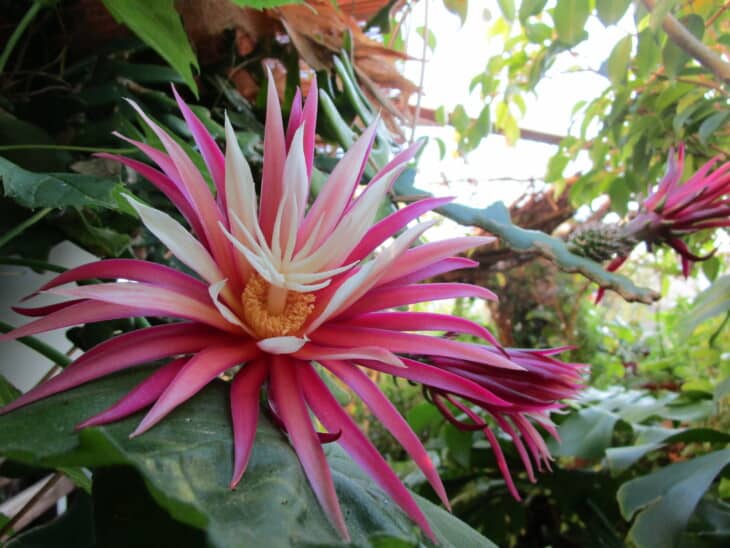
Fishbone cacti (Disocactus anguliger) are also known as zig-zag cacti, orchid cacti, or rickrack cacti. Fishbone cacti’s fleshy stems are roughly twelve inches long, two inches wide, and flat with deep lobes. The stems have the appearance of a braided or plaited hairstyle.
Fishbone cactus is not the type of plant you will find in a desert. It is an epiphyte that enjoys a more humid climate and indirect sunlight. Epiphytes use other plants to anchor themselves. They absorb nutrients and water from the air around the plant. Provide the fishbone cactus with some orchid compost or tree bark to attach on.
Allow the fishbone cactus to hang so its braid-like leaves can trail down as long hair would. A healthy fishbone cactus will reward you with large white or yellow flowers that open at night. The flowers are fragrant and produce a kiwi-like edible fruit. When your fishbone cactus needs a trim, use the cuttings to grow new plants.
3. Corkscrew Rush
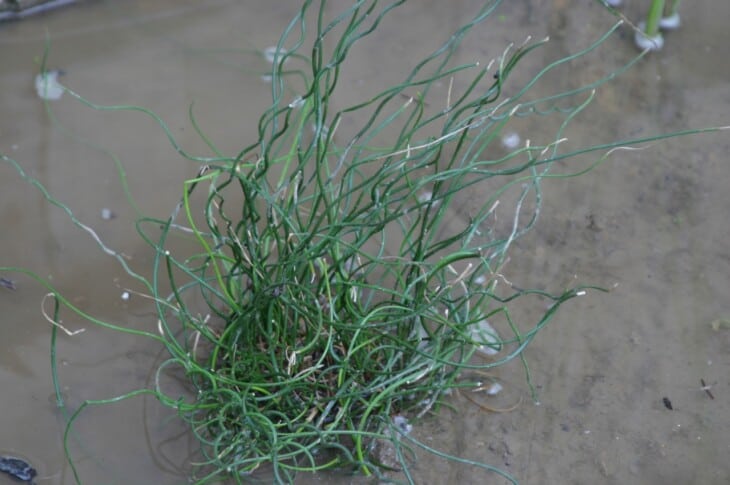
A corkscrew rush (Juncus effusus ‘Spiralis’) has twisted stems with various degrees of curliness. Varieties like Curly Wurly, Big Twister, and Spiralis are striking plants that resemble hairstyles ranging from spiral waves to ringlet curls. Corkscrew rush plants are fun to grow and attract attention in the garden or as container plants.
A corkscrew rush does not have leaves. Instead, the smooth, dark green stems create a delightful show. A corkscrew rush plants form clumps that grow about twelve to eighteen inches tall and the same width.
A corkscrew rush is a perennial that grows in wet soil or slightly submerged in water and loves lots of direct sunlight. It can be grown in a submerged pot in a water feature or as a container plant on a patio. When planted directly into ponds or streams, the rhizomes help to stabilize the soil.
4. Ponytail Palms
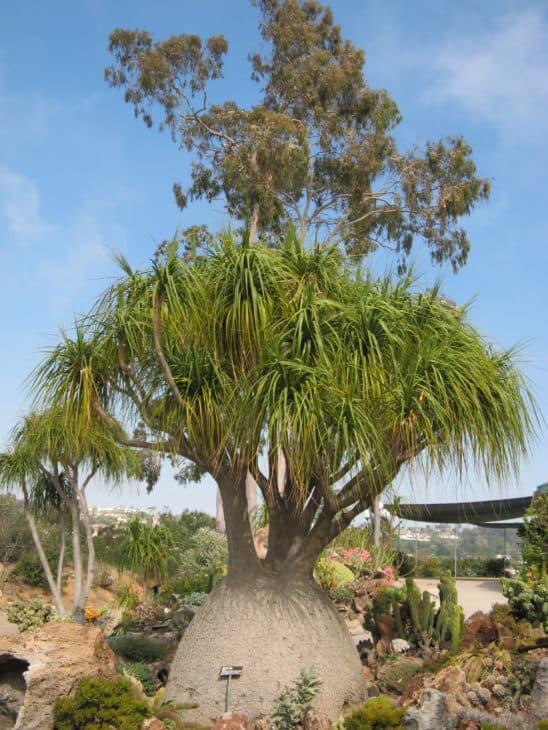
As the name indicates, a ponytail palm (Beaucarnea recurvata) produces long curved leaves on the top of the tree, similar to a high ponytail hairstyle. A ponytail palm or Elephant’s foot tree is not a palm tree, though. It is a succulent that is related to yucca plants.
Ponytail plants are easy-to-grow, long-lived plants. As an indoor plant, a ponytail palm grows about four feet tall. The small tree has a single stem with a wide base that tapers into a slender top that bears one or more rosettes of leaves or ponytails.
Ponytail palms enjoy warm to hot growing conditions and plenty of sunlight. Ensure that your ponytail palm is not overwatered. Provide a good soaking occasionally but ensure that the soil dries out before the next watering. Ponytail palms produce a plantlet called an offset near the base that can be cut off and potted to produce a new plant to gift or share.
5. Ornamental Onion Hair
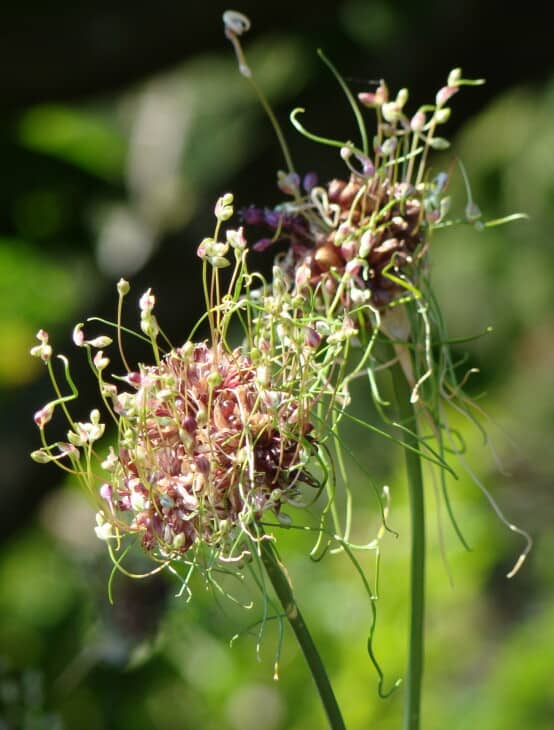
Onion hair plants (Allium vineale) are best described as having a nutty professor hairstyle. These wild onions produce a long stem up to forty inches tall that caries the flower. The flower comprises a cluster of bulbils with hairy tendrils extending from them.
Even with such a wild unruly hairstyle, these bulbs are a very attractive addition to a garden or as a pot plant. Ornamental onion hair does not take up much space and is just the plant to make a big statement in a rockery when they flower in summer. The flowers can be added to flower arrangements to bring these fun flowers indoors.
Onion hair is easy to grow from seed and can be planted early in spring. Onion hair can also be shared as offsets or bulbs for autumn planting.
6. Curly Spider Plant
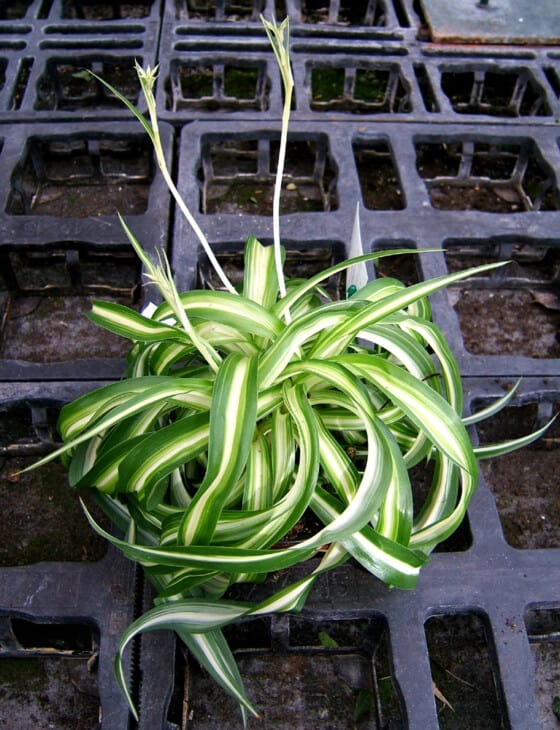
The curly spider plant (Chlorophytum comosum ‘Bonnie’) is a smaller variety of the common spider plant, also called hen-and-chickens. With its variegated curly leaves, the curly spider plant resembles a curly medium-length bob with highlights. These perennials from the Asparagaceae family are ideal indoor plants.
With its stylish hairstyle, the curly spider plant grows well as a hanging plant that does not require direct sunlight to flourish. A few hours of indirect light are adequate. Curley spider plants love a moist soil environment and will let you know when they need to be watered, as the leaves become curlier when needing more water.
Curly spider plants are easy to share with friends as they produce plantlets that grow from runners. These plantlets will produce their own roots if placed on top of some soil while attached to the mother plant. Once roots have developed, the runner can be cut, and the plantlet is ready to be gifted.
Related: 8 Plants That Look Like Spider Plants | 8 Spider Plant Benefits
7. Fiber Optic Plant
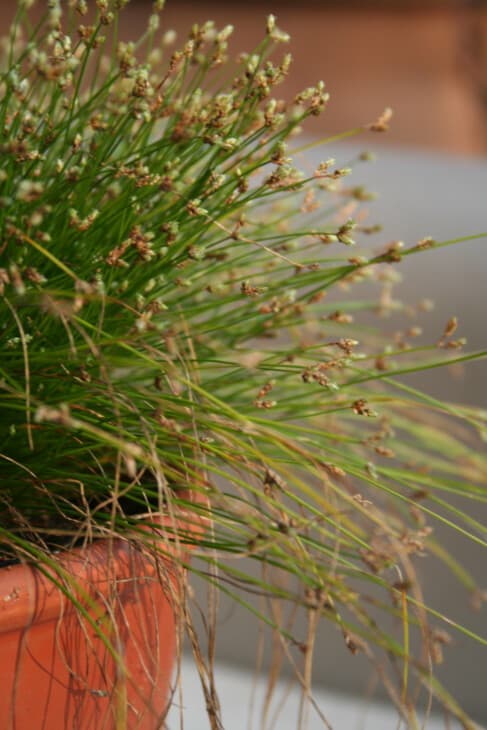
Fiber optic plants (Isolepis cernua) go by many names, such as slender club rush, low bulrush, and very descriptively as Tina Turner grass. The long slender leaves form a dense tuft that may range from twelve inches to a foot long, depending on growing conditions.
Fiber optic plants derive their name from the small white fluffy blooms that appear on the end of the flower spikes during summer. The illusion of lights on the plant is accentuated by a breeze moving the leaves about. The movement creates the impression that the lights are blinking.
Fiber optic plants are slow growing but beneficial to any garden’s water feature. This member of the bulrush family does a great job of purifying the water and producing oxygen. When grown on the edge of a pond, fiber optic plants also provide ideal shelter for frogs and fish.
8. Medusa’s Head Plant
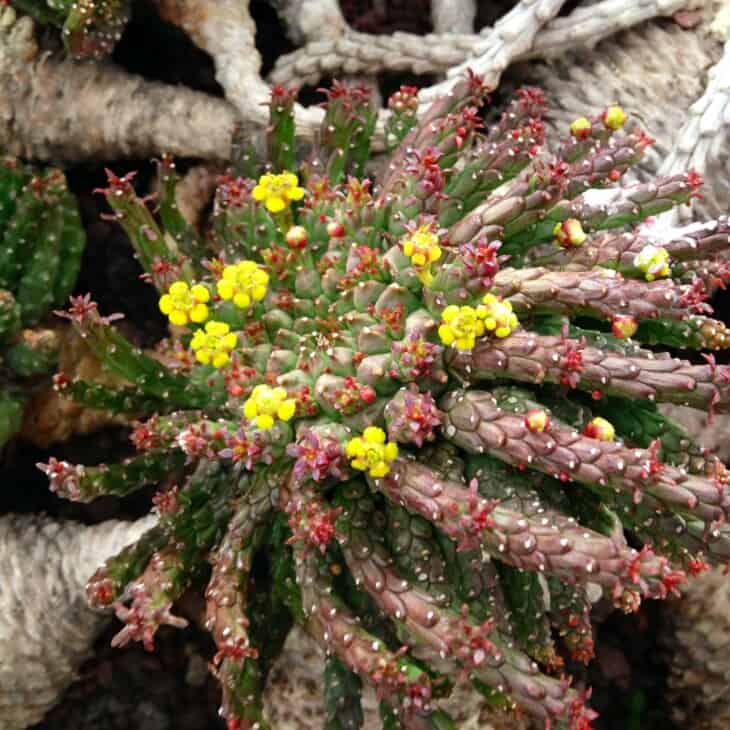
Medusa’s head plant (Euphorbia Flanaganii) is a branched succulent that resembles a head with snake-like locks of hair. These branches grow from a short caudex or stem and can grow to a length of twenty to thirty inches.
The Medusa’s head plant does not tolerate long periods of drought as it is a coastal growing plant in its natural habitat of South Africa. A happy Medusa’s head will continuously form new serpent-like branches or arms to replace older ones.
A Medusa’s head plant produces pups or plantlets at the end of mature arms. If placed on soil, this pup will grow roots to start a new plant for gifting or growing your collection of hair-like pants.

